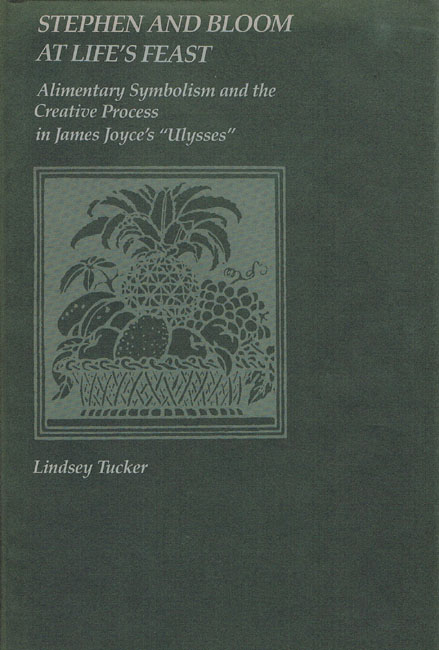Stephen and Bloom at Life’s FeastAlimentary Symbolism and the Creative Process in James Joyce’s UlyssesLindsey Tucker |  1984 Literary Criticism / European / English, Irish, Scottish, Welsh 177 pp. 6x9 |
|||
|
read the full text of the book •
|
The creative process is a central concern of all of James Joyce’s fiction, and three major image clusters are employed as analogues for it. The first two, already recognized and fully discussed by scholars, are the images of the artist as the priest “of eternal imagination” who transmutes “the daily bread of experience into the radiant body of everliving life,” and the artist as alchemist, who, like the priest at his mass, assists in the transformation of substances, participates in the reconciliation of such opposites as body and spirit, and celebrates the relatedness of all things. The third image cluster, in which bodily functions are made metaphors of the creative process, has not, heretofore, been examined as carefully as the other two. Joyce himself was clear on the importance of the body in his work. He once described Ulysses as, among other things, “the epic of the human body.” And when his continued insistences that “in my book the body lives in and moves through space and is the home of a fully human personality” elecited the protest, “But the minds , the thoughts of the characters,” he replied abruptly: “If they had no body they would have no mind . . . It’s all one.” Joyce’s attention to meals and eating, to the digestive process, and to evacuation and excrement, and his careful delineation of the responses of Stephen and Bloom to these bodily functions, represent two ways in which Joyce comments on the creative process, on aesthetic and kinetic types of creativity, and on the fertility and wholeness of the characters themselves. Professor Tucker examines the relationship Joyce establishes between the alimentary process and other elements – language, ritual, and art – in order to reach an understanding of how he creates both the form and content of Ulysses through his use of man’s ingestive, transformative, and eliminative functions. Stephen, she discovers, betrays a tendency to relegate digestive functions to a lower world that he finds simultaneously attractive and threatening, and to transform meals and eating into words and metaphors. Bloom incorporates, ingests his experience; and this ability to assimilate, first manifested in his attitudes toward food and its digestion, is the basis of thought processes, his verbal creativity, and his preoccupation with fertility. Molly Bloom, too, Dr. Tucker suggests, is as great an ingester and an assimilator of life as her husband; and this is true on both the literal and metaphoric levels. But Molly is also more. Ultimately, as her name would imply, she is the food of the book called Ulysses. And because Joyce is not about to render process static, she is also excrement, the end product of the novel, and like all end products, she bears the seeds of a beginning. In Molly it all comes together: the associations of language with food and with excrement, the literal and metaphoric ingestions of food, the physical and artistic transformations through ritual. The priest’s chalice, by which Stephen hopes to transmute “the daily bread of experience into the radiant body of everliving life,” is, in the end, only an inert object. Molly astride her chamberpot is the living vessel. Both subject and object, she is the source of all transformation mysteries for her creator; and it is she who represents communion, not as ritual, but simply as being. Lindsey Tucker received her Ph.D. from the University of Delaware, and is teaching at West Chester University. | |||

